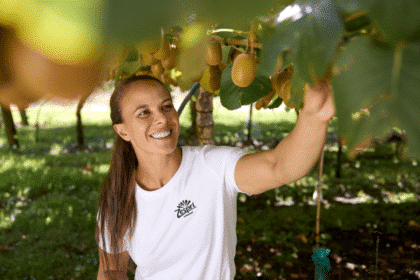Have you lost all faith in programmatic advertising? Prepare to have it restored in full after reading this…
Programmatic. It’s a word that’s becoming more and more prevalent in the advertising and marketing vernacular, yet it seems not all marketers are convinced it’s the right way to go.
Some fear their ads will appear next to extremist or low-quality content, while others complain about how confusing the programmatic landscape is and are sceptical of opaque ‘ad tech taxes’ that drain roughly half of the money they spend in programmatic.
Another issue is fraud. It represents theft of marketer dollars and poses an existential threat to the digital ecosystem – the system that funds compelling journalism, music, gaming, and online information – because it undermines brands’ trust in the programmatic marketplace.
According to a recent report from the CMO Council and Dow Jones, 72 per cent of programmatic advertisers are concerned about brand integrity and control.
Advertising waste is also a factor that marketers are increasingly keeping an eye on, with online viewability an issue that’s been plaguing them in recent years.
A global study by Kantar Millward Brown last year found viewability to be the biggest tactical challenge marketers face in the media and digital landscape.
Furthermore, Australian online advertising’s viewability is at just 57.2 per cent, according to Integral Ad Science’s Media Quality Report for the second half of 2017.
Simply put, trust and transparency in programmatic advertising needs to be restored for it to reach the heights many have predicted.
While digital publishers rely on their technology partners to help them fund important and compelling content, marketers need a trusted and brand-safe marketplace where they can engage consumers and achieve return on their ad investment.
According to AppNexus’ director of market development in Australia and New Zealand, Samuel Tan, the programmatic landscape is set to enter another phase – one that will drive more trust, with a firm focus on quality, outcomes and transparency.
Here are four big reasons why Tan believes marketers should jump onboard the programmatic train:
- It’s a safe place to buy media on the open web
Tan argues that unlike Facebook and YouTube, whose entire businesses are based on monetising (often low-quality) user-generated content, marketers can turn to programmatic marketplaces to buy inventory from high-quality publishers such as Fairfax, News Corp Australia, The Guardian, and Nine Entertainment.
These companies all employ journalists, editors, fact checkers, designers, video producers, game designers, and app developers so they don’t have to worry that their ads will appear next to low-quality and possibly dangerous content.
- Transparency is the key
Companies such as AppNexus are working towards delivering no hidden fees and end-to-end fee transparency from brand to publisher across the board.
Tan says one promising opportunity is to leverage audit payment providers who use technology like blockchain to audit the supply chain.
“If marketers can see and verify how much of their budget reaches high-quality publishers, and how much goes to paying technology fees, we can restore much of the trust that’s currently lacking in the programmatic ecosystem,” Tan explains.
- The quality of inventory is top notch
Two-and-a-half years ago, AppNexus rolled out an aggressive initiative to crack down on invalid traffic, low-quality inventory, domain spoofing, and unauthorised re-selling.
It subsequently imposed some of the industry’s most far-reaching prohibitions against hate speech and fake news, and committed significant resources to develop advanced detection tools and to understand (and shut down) the various business models that bad actors deploy.
But maintaining inventory quality is not just a static endeavour of detection, according to Tan.
“The markers we searched for in January will not look the same in December. Bad actors have proven themselves highly adaptive,” he says.
“We need to do more than just detect; we need to delve deeply into the business models that inform fraud schemes and use that understanding to stay ahead of bad actors.”
AppNexus is also part of Ads.txt, a global initiative by the Interactive Advertising Bureau designed to eliminate counterfeit inventory in the programmatic advertising ecosystem by giving publishers a standardised way to publicly list all of their authorised partners.
- It offers guaranteed outcomes-based buying
With advanced machine learning prediction, platforms like AppNexus can enable buyers to only pay for their desired outcomes.
“With guaranteed views, buyers can target the entire open internet. They can use viewability as a given and optimise campaigns for other KPIs they care about,” Tan says.
“Their budgets are spent 100 per cent on media that works for them: viewable impressions that also achieve their outcomes.
“This idea of optimising to views can be extended to other KPIs like video completions.”








